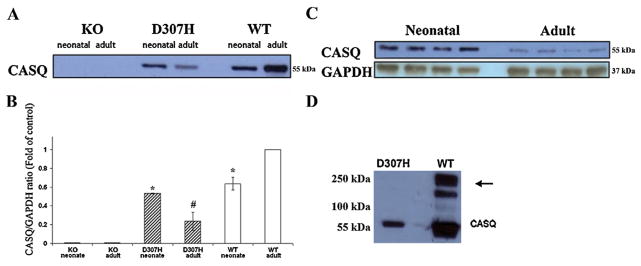Fig. 2.

Expression of CASQ2 protein in adult and neonatal mouse hearts. (A) Age dependent expression of CASQ2 in WT, D307H and KO Ventricular homogenates (50 μg protein/lane, n = 3). (B) Quantitative comparison of age-dependent CASQ2 expression in WT and mutant heart ventricles. Data is presented as CASQ2/GAPDH ratio relative to WT (Each neonatal homogenate sample comprised 4–5 hearts, n = 3, mean ± SD, p < 0.05 *; p < 0.01 #). (C) Representative blot showing the decrease in CASQ2 expression in adult D307H compared to neonates. (D) Representative blot WT hearts showing the high molecular weight “CASQ-like proteins”, assumed to be CASQ2 polymers, which are not detectable in the mutant (arrow). D307H, CASQ2D307H/D307H; KO, CASQ2Δ/Δ; WT; wild type; CASQ, calsequestrin.
